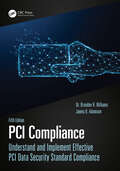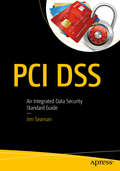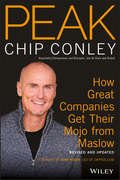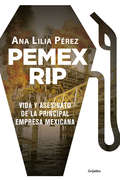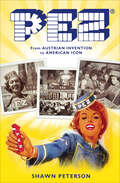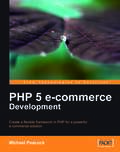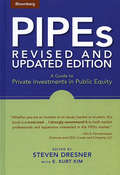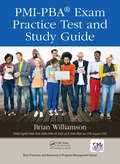- Table View
- List View
PAREXEL International Corp.: Stages of Innovation
by Regina E. Herzlinger Natalie KindredThrough the lens of biopharmaceutical contract research organization (CRO) PAREXEL, this case traces the evolution of the firm as it reinvents itself in response to the transformation of the CRO sector from a small, secondary cluster of firms into a major player with essential capabilities for global drug development. The case begins as PAREXEL is pursuing an expensive globalization and IT strategy while many of its competitors focus on cost cutting. Over the prior 20 years, CEO Josef von Rickenbach had grown PAREXEL into a billion-dollar company by taking calculated risks and making bold investments based on anticipated industry trends and client demand. Now, despite slowing demand for CRO services, PAREXEL is betting that a global footprint and technology capabilities will become its key future competitive advantage. Near the end of the case, the timing transitions to a decade after Rickenbach made this strategic decision, describing the development of the industry and PAREXEL's place within it.
PC&D, Inc.
by Richard G. Hamermesh Evelyn T. ChristiansenCovers history of PC&D from 1960 to 1975 as it grows from a single business firm to a diversified firm. Emphasizes the use of subsidiaries for product development and fast growth. Other issues include problems of a new CEO in keeping control of fast growing divisions.
PCAOB (A)
by Lynn Sharp Paine Kim Eric BettcherMembers of the Public Co. Accounting Oversight Board--a private-sector, nonprofit body created by the Sarbanes-Oxley Act of 2002--must determine the form and content of a new auditing standard on internal control that will fulfill the requirements of Section 404 of the act. After receiving comments from issuers, investors, and accounting firms, board members contemplate the necessary scope of an audit engagement to evaluate the effectiveness of internal controls and restore investors' confidence in financial reporting. Gives students an opportunity to consider the role of external regulation and self-regulation and such issues as the difficulties of cost-benefit analysis for proposed regulations, the relation between rules and discretion, the differences between investor and executive perspectives, and the apportionment of responsibilities among management, internal auditors, and external auditors.
PCAOB Efforts to Improve Audit Quality (B): Excerpts of Public Comment Letters
by Paul M. Healy Aiyesha DeySupplement
PCI Compliance: Understand and Implement Effective PCI Data Security Standard Compliance
by Branden R Williams James AdamsonThe Payment Card Industry Data Security Standard (PCI DSS) is now in its 18th year, and it is continuing to dominate corporate security budgets and resources. If you accept, process, transmit, or store payment card data branded by Visa, MasterCard, American Express, Discover, or JCB (or their affiliates and partners), you must comply with this lengthy standard. Personal data theft is at the top of the list of likely cybercrimes that modern-day corporations must defend against. In particular, credit or debit card data is preferred by cybercriminals as they can find ways to monetize it quickly from anywhere in the world. Is your payment processing secure and compliant? The new Fifth Edition of PCI Compliance has been revised to follow the new PCI DSS version 4.0, which is a complete overhaul to the standard. Also new to the Fifth Edition are: additional case studies and clear guidelines and instructions for maintaining PCI compliance globally, including coverage of technologies such as Kubernetes, cloud, near-field communication, point-to-point encryption, Mobile, Europay, MasterCard, and Visa. This is the first book to address the recent updates to PCI DSS and the only book you will need during your PCI DSS journey. The real-world scenarios and hands-on guidance will be extremely valuable, as well as the community of professionals you will join after buying this book. Each chapter has how-to guidance to walk you through implementing concepts and real-world scenarios to help you grasp how PCI DSS will affect your daily operations. This book provides the information that you need in order to understand the current PCI Data Security Standards and the ecosystem that surrounds them, how to effectively implement security on network infrastructure in order to be compliant with the credit card industry guidelines, and help you protect sensitive and personally identifiable information. Our book puts security first as a way to enable compliance. Completely updated to follow the current PCI DSS version 4.0 Packed with tips to develop and implement an effective PCI DSS and cybersecurity strategy Includes coverage of new and emerging technologies such as Kubernetes, mobility, and 3D Secure 2.0 Both authors have broad information security backgrounds, including extensive PCI DSS experience
PCI DSS A Pocket Guide
by Alan Calder Nicki CarterAll businesses that accept payment cards are prey for hackers. When an attack is exposed - perhaps through a victim disputing fraudulent credit card charges - the target company will be exposed to a harsh and expensive set of repercussions. PCI DSS is designed to ensure that merchants are effectively protecting cardholder data. It recognises that not all merchants may have the technical understanding to identify for themselves the necessary steps and short-circuits to avoid danger. All merchants, and their service providers, should therefore ensure that they comply with PCI DSS, and that they stay compliant.
PCI DSS: An Integrated Data Security Standard Guide
by Jim SeamanGain a broad understanding of how PCI DSS is structured and obtain a high-level view of the contents and context of each of the 12 top-level requirements. The guidance provided in this book will help you effectively apply PCI DSS in your business environments, enhance your payment card defensive posture, and reduce the opportunities for criminals to compromise your network or steal sensitive data assets. Businesses are seeing an increased volume of data breaches, where an opportunist attacker from outside the business or a disaffected employee successfully exploits poor company practices. Rather than being a regurgitation of the PCI DSS controls, this book aims to help you balance the needs of running your business with the value of implementing PCI DSS for the protection of consumer payment card data.Applying lessons learned from history, military experiences (including multiple deployments into hostile areas), numerous PCI QSA assignments, and corporate cybersecurity and InfoSec roles, author Jim Seaman helps you understand the complexities of the payment card industry data security standard as you protect cardholder data. You will learn how to align the standard with your business IT systems or operations that store, process, and/or transmit sensitive data. This book will help you develop a business cybersecurity and InfoSec strategy through the correct interpretation, implementation, and maintenance of PCI DSS. What You Will Learn Be aware of recent data privacy regulatory changes and the release of PCI DSS v4.0Improve the defense of consumer payment card data to safeguard the reputation of your business and make it more difficult for criminals to breach securityBe familiar with the goals and requirements related to the structure and interdependencies of PCI DSSKnow the potential avenues of attack associated with business payment operationsMake PCI DSS an integral component of your business operationsUnderstand the benefits of enhancing your security cultureSee how the implementation of PCI DSS causes a positive ripple effect across your business Who This Book Is For Business leaders, information security (InfoSec) practitioners, chief information security managers, cybersecurity practitioners, risk managers, IT operations managers, business owners, military enthusiasts, and IT auditors
PDS: Ring-Fencing the Ranch
by Tarun Khanna Dennis Campbell Kerry HermanPallak Seth, Group CEO of PDS Multinational Fashions, is contemplating options to bring better collaboration across his global apparel supply chain platform. PDS, a group of 50-plus subsidiary companies, each led by its own CEO and with different apparel industry specialties, has grown rapidly over the past decade, yet the industry is increasingly competitive and challenges remain constant. Looking for ways to reach the Group's 2023 goals of $2 billion in revenue, Seth and his executive board are considering two ways to increase collaboration and reward performance: a joint P&L approach to drive partnerships across the subsidiaries and an employee stock option plan, to unlock value across the Group.
PEAK: How Great Companies Get Their Mojo from Maslow Revised and Updated (J-b Us Non-franchise Leadership Ser. #32)
by Chip ConleyProven principles for sustainable success, with new leadership insight PEAK is the popular, transformative guide to doing business better, written by a seasoned entrepreneur/CEO who has disrupted his favorite industry not once, but twice. Author Chip Conley, founder and former CEO of one of the world’s largest boutique hotel companies, turned to psychologist Abraham Maslow's Hierarchy of Needs at a time when his company was in dire need. And years later, when the young founders of Airbnb asked him to help turn their start-up home sharing company into a world-class hospitality giant, Conley once again used the principles he’d developed in PEAK. In the decade since this book's first edition, Conley's PEAK strategy has been developed on six continents in organizations in virtually every industry. The author’s foundational premise is that great leaders become amateur psychologists by understanding the unique needs of three key relationships—with employees, customers, and investors—and this message has resonated with every kind of leader and company including some of the world’s best-known, from Apple to Facebook. Avid users of PEAK have found that the principles create greater loyalty and differentiation with their key stakeholders. This new second edition includes in-depth examples of real-world PEAK companies, including the author’s own at Airbnb, and exclusive PEAK leadership practices that will take you—and your company's performance—to new heights. Whether you're at a startup or a Fortune 500 company, at a for-profit, nonprofit, or governmental organization, this book can help you and your people reach potential you never realized you had. Understand how Maslow's hierarchy makes for winning business practices Learn how PEAK drove some of today's top businesses to success Help employees reach their full potential—and beyond Transform the customer experience and keep investors happy The PEAK framework succeeds because it elevates the business from the inside out. These same principles apply in the boardroom, the breakroom, and your living room at home, and have proven to be the foundation of healthy, fulfilled lives. Even if you think you're doing great, you could always be doing better—and PEAK gives you a roadmap to the next level.
PEMEX RIP: Vida y asesinato de la principal empresa mexicana
by Ana Lilia PérezCon un estilo eficaz y fuentes de gran calado, este libro responde a una falta en el periodismo nacional sobre la industria que marcó la mayor parte del siglo XX en México y que actualmente toma un rumbo indefinido pero bastante negativo. A partir de la nacionalización de la industria petrolera, por ochenta años Pemex fue el principal sostén de la economía mexicana, una maquinaria generadora de billones y billones de dólares por la producción y venta del oro negro y sus derivados, sólo que, a pesar de ser un bien público, sus ganancias y beneficios se repartieron entre pocas manos. Al cabo de esas ocho décadas, la reforma energética, que acabó con el modelo nacionalista, hizo escombros el Pemex de Cárdenas: deliberadamente, la producción se derrumbó para dar paso a la desnacionalización y privatización. Pero ¿quiénes se enriquecieron de la gallina de los huevos de oro?, ¿dónde quedó la ganancia de la renta petrolera? A estas y otras interrogantes da respuesta este libro, que explica el entramado que llevó al declive y desmantelamiento de la industria petrolera mexicana. Pemex RIP cierra una trilogía sobre Pemex iniciada con Camisas Azules, Manos Negras. El saqueo de Pemex desde Los Pinos (2010) y El Cártel Negro. Cómo el crimen organizado se ha apoderado de Pemex (2011), en la que revela fraudes, peculado, abuso de poder, tráfico de influencias, enriquecimiento ilícito, sobornos y muchos otros abusos de funcionarios y empleados que tuvieron en sus manos la encomienda de dirigir y operar una de las petroleras más importantes del mundo, y que en sus manos la convirtieron en epicentro de corrupción del país.
PEMEX RIP: Vida y asesinato de la principal empresa mexicana
by Ana Lilia PérezCon un estilo eficaz y fuentes de gran calado, este libro responde a una falta en el periodismo nacional sobre la industria que marcó la mayor parte del siglo XX en México y que actualmente toma un rumbo indefinido pero bastante negativo. A partir de la nacionalización de la industria petrolera, por ochenta años Pemex fue el principal sostén de la economía mexicana, una maquinaria generadora de billones y billones de dólares por la producción y venta del oro negro y sus derivados, sólo que, a pesar de ser un bien público, sus ganancias y beneficios se repartieron entre pocas manos. Al cabo de esas ocho décadas, la reforma energética, que acabó con el modelo nacionalista, hizo escombros el Pemex de Cárdenas: deliberadamente, la producción se derrumbó para dar paso a la desnacionalización y privatización. Pero ¿quiénes se enriquecieron de la gallina de los huevos de oro?, ¿dónde quedó la ganancia de la renta petrolera? A estas y otras interrogantes da respuesta este libro, que explica el entramado que llevó al declive y desmantelamiento de la industria petrolera mexicana. Pemex RIP cierra una trilogía sobre Pemex iniciada con Camisas Azules, Manos Negras. El saqueo de Pemex desde Los Pinos (2010) y El Cártel Negro. Cómo el crimen organizado se ha apoderado de Pemex (2011), en la que revela fraudes, peculado, abuso de poder, tráfico de influencias, enriquecimiento ilícito, sobornos y muchos otros abusos de funcionarios y empleados que tuvieron en sus manos la encomienda de dirigir y operar una de las petroleras más importantes del mundo, y que en sus manos la convirtieron en epicentro de corrupción del país.
PEZ: From Austrian Invention to American Icon (American Palate Ser.)
by Shawn PetersonThe world&’s one-and-only PEZ historian dispenses fun facts on the candy&’s evolution from smoking substitute to childhood treat to pop culture collectible. PEZ is an American classic and a staple of many childhood memories. Yet it originated in Austria, where PEZ began in 1927 as compressed peppermint tablets marketed as an alternative to smoking. Upon arrival in the United States in 1952, PEZ quickly took a new direction, adding fruit flavors and three-dimensional character heads to top the dispensers. Now produced in Orange, Connecticut, the iconic PEZ brand is available in over eighty countries, selling more than sixty-five million dispensers annually and inspiring collectors and fans worldwide. Join the world&’s first and only official PEZ historian, Shawn Peterson, on a journey of sweet proportions for an inside look at the world&’s most cherished interactive candy. Includes photos
PFA Pension: Expansion of Alternatives Portfolio
by Jerome Lenhardt Victoria Ivashina Federica GabrieliPFA Pension was the biggest commercial pension provider in Denmark. At the end of 2015, the company had decided to boost its investments into the alternative asset class, an area where it was lagging behind its competitors. The aim was to privilege direct investments and co-investments rather than allocations through funds. One year later, PFA could count on an expert alternative investment team, a defined investment process and a number of successful direct investments. Still, a number of questions remained: How could PFA better access attractive deal opportunities? Should PFA try to build a formal deal sourcing model? What resources and skills would be necessary to add to the alternative investment team?
PFA Pension: Expansion of Alternatives Portfolio
by Jerome Lenhardt Victoria Ivashina Federica GabrieliPFA Pension was the biggest commercial pension provider in Denmark. At the end of 2015, the company had decided to boost its investments into the alternative asset class, an area where it was lagging behind its competitors. The aim was to privilege direct investments and co-investments rather than allocations through funds. One year later, PFA could count on an expert alternative investment team, a defined investment process and a number of successful direct investments. Still, a number of questions remained: How could PFA better access attractive deal opportunities? Should PFA try to build a formal deal sourcing model? What resources and skills would be necessary to add to the alternative investment team?
PFA Pensions: The Climate Plus Product
by Daniel Green Victoria Ivashina Alys FerragamoThe case explores whether alternative investments play a unique role in achieving low carbon dioxide emissions at the portfolio level. This case is set in April of 2020 and follows Kasper Ahrndt Lorenzen, Chief Investment Officer, and Peter Tind Larsen, Head of Alternative Investments, at PFA, the largest commercial pension fund in Denmark. PFA had recently seen increased demand from its corporate clients to offer a product with lower carbon dioxide emissions. The case explores PFA's decision to offer a "Climate Plus" product that would aim to produce strong returns and meet ambitious climate-related goals. In the case, the protagonists meet to discuss the role of alternative assets in the product. Importantly, PFA already has a significant presence in the alternative space and, in particular, in private equity and renewable energy. A large fraction of their alternative portfolio is managed in-house. Among other things, PFA is thinking about adding timberland investments as a new asset class to achieve net zero emissions. Lorenzen and Larsen need to determine if they could leverage their existing team and processes to invest in timberland and whether it is the right time to launch a climate-focused product. This case provides a good platform for discussion on direct investing in the alternative space and the role of alternatives for large institutional investors.
PFIN
by Lawrence J. Gitman Michael D. Joehnk Randall Billingsley4LTR Press solutions give students the option to choose the format that best suits their learning preferences. This option is perfect for those students who focus on the textbook as their main course resource.
PFIN5: Personal Finance
by Lawrence J. Gitman Michael D. Joehnk Randall S. BillingsleyNIMAC-sourced textbook
PG&E and the First Climate Change Bankruptcy
by Stuart C. Gilson Sarah L. AbbottIn early 2020, the California-based utility PG&E filed a second amended plan of reorganization. PG&E had filed for Chapter 11 bankruptcy in the face of more than $30 billion of legal claims brought against it for its alleged role in causing California wildfires. The plan had the support of key creditors and shareholders and a court-appointed committee representing the wildfire victims. However, it faced strong opposition from California's governor, Gavin Newsom, who was concerned that PG&E's plan would leave it too highly leveraged, and unable to make necessary investments. Were Newsom's concerns valid ones? Did the plan as currently envisioned leave the reorganized PG&E with too much debt to meet its obligations to the wildfire victims while still making the necessary investments to update its equipment? And was PG&E prepared for the new reality of climate change?
PHP 5 e-commerce Development
by Michael PeacockThis is a fast-paced tutorial focusing on creating a framework and using it to build an online store through an ongoing case study. Later chapters include examples to illustrate how easily the framework can be adapted for different situations. The framework and code are enhanced and built upon with each chapter, adding more and more functionality. If you are a web developer, or anyone looking to increase your understanding of e-commerce site development, this book is for you. Primarily aimed at PHP developers, it is suitable for any web developer interested in enhancing their e-commerce knowledge, or developers looking to move towards PHP. Intermediate knowledge of PHP development and object-oriented programming is assumed, and basic knowledge of e-commerce principles will be of benefit too.
PIPEs: A Guide to Private Investments in Public Equity (Bloomberg Financial #56)
by Steven Dresner E. Kurt KimPrivate investments in public equity (PIPEs) offer a practical financing alternative for companies seeking capital and a unique asset for investors. For practitioners who know how to identify and execute transactions, PIPEs present a growing opportunity. This revised and updated guide presents the views, voices, and invaluable expertise of leading practitioners from all specialties in the field. The book is divided into three parts: "The Business of PIPEs," which provides a historical backdrop and overview; "Regulatory Landscape and Structural Alternatives," which details the legal framework and transaction structures; and "Deal Flow," which offers the investor’s perspective on negotiating deals. With detailed discussions, ranging from the origins of the marketplace and deal structures to legal considerations and due diligence, and from finding new opportunities to trading strategies, this book provides a clear window to the inner workings of this active area of the small-cap market. Investors, financial analysts, investment bankers, corporate and securities attorneys, and executives of public companies will find substantial value in the pages of this book.
PLC and HMI Development with Siemens TIA Portal: Develop PLC and HMI programs using standard methods and structured approaches with TIA Portal V17
by Liam BeeBecome well-versed with the tools available in the Siemens TIA toolbox and write PLC and HMI code effectivelyKey FeaturesFind out how to use TIA Portal effectively to boost your productivityLearn about a structured design pattern and understand why it is so powerful when implemented correctlyDiscover efficient project management and design practicesBook DescriptionWith automation requirements on the rise, Siemens' TIA Portal development environment is almost a necessity for any automation engineer. The Totally Integrated Automation (TIA) environment helps seamlessly integrate all things automation, from PLC hardware and software design to HMI development. This book helps you understand the tools available in the TIA toolbox and shows you how to write code effectively.The book begins by introducing you to the TIA environment, covering the layout and tools available. Once you've got to grips with the environment, you'll find out how to create hardware to write programs against, including adding IO modules and assigning memory for input and output. Next, you'll develop logic in all of the languages that TIA Portal offers, such as Ladder, Function Block Diagram, and Structured Text (SCL) (note that Statement List is not covered as a deprecated language), as well as the newest language, Cause and Effect (CEM). You'll also discover how to store standard code in libraries, creating a version control system that is easy to manage and aids standard design. Finally, following the PLC design chapters, you'll learn how to develop HMI applications in TIA Portal's latest unified hardware.By the end of the book, you'll be well equipped to use all of the features that TIA Portal V17 offers.What you will learnSet up a Siemens Environment with TIA PortalFind out how to structure a projectCarry out the simulation of a project, enhancing this further with structureDevelop HMI screens that interact with PLC dataMake the best use of all available languagesLeverage TIA Portal's tools to manage the deployment and modification of projectsWho this book is forThis TIA Portal book is for anybody looking to learn PLC/HMI development using the latest Siemens development platform. Industrial software engineers, PLC engineers, automation engineers, and electricians will be able to advance their skill set with this guide. A basic understanding of PLC principles such as PLC data types and basic objects such as function blocks and functions is necessary to get started.
PMI-PBA® Exam Practice Test and Study Guide (Best Practices in Portfolio, Program, and Project Management)
by Brian WilliamsonThe PMI-PBA® Exam Practice Test and Study Guide attempts to address all your questions and concerns by providing two of the most sought-after study aids: memory maps and practice questions. The systematic use of memory maps helps aid in the efficient recall of information and can boost confidence during the exam. Well-crafted practice questions are fantastic study aids that can be used to track your progress as you learn new concepts, introduce you to the complex sentence structure that is likely to appear on the exam, and concentrate your studies by domain, essentially preparing you to pass the very challenging PMI-PBA® Exam in the allotted four hours. <P><P>In addition to study hints and exam topics, this book provides references to tools and techniques that should be incorporated into your work immediately. For each of the five domains outlined in the PMI Professional in Business Analysis (PMI-PBA)® Examination Content Outline 2013 (the ECO), twenty practice questions test your knowledge. Also included is a challenging 200-question practice exam, which is representative of the actual exam. <P><P>To enhance your studies, a timed, online simulated exam is also provided. At the end of the simulated exam, you can see your score per the number of questions you answered correctly. These exam questions are crafted to foster learning and reinforce content; they are not obscure or overly complicated, but rather are representative of the actual exam. <P><P>Knowing what to do must be translated into doing what you know. This book helps you prepare for the PMI-PBA® exam by instilling knowledge and encouraging critical thinking. As a result, the skills attained can lead to improved project success and outcomes, and you’ll have a much stronger understanding of the material, along with the tools and techniques of business analysis. PMI-PBA® is a registered trademark of the Project Management Institute.

